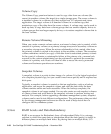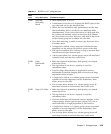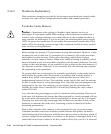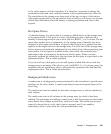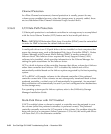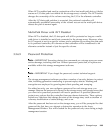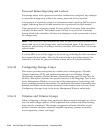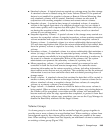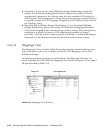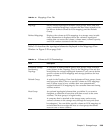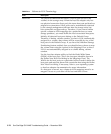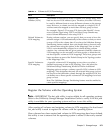
3-64 Sun StorEdge 5310 NAS Troubleshooting Guide • December 2004
Password Failure Reporting and Lockout
For storage arrays with a password and alert notifications configured, any attempts
to access the storage array without the correct password will be reported.
If a password is incorrectly entered, an information major event log (MEL) event is
logged, indicating than an invalid password or no password has been entered.
If the password is incorrectly entered 10 times within 10 minutes, both controllers
will enter lockout mode. The lockout mode will last for a period of 10 minutes,
during which both controllers will deny any attempts to enter a password to access
the storage array.
Note – IMPORTANT If the controllers are reset, the password failure counter will be
cleared and access to the storage array can be attempted again. If the password is
incorrectly entered after 10 attempts within 10 minutes, the controllers will re-enter
lockout mode.
A critical MEL event will be logged to the event log, indicating that the controllers
have entered lockout mode. After the 10 minute lockout period has elapsed, the
controllers will reset the password failure counter and will unlock themselves.
3.3.6.10 Configuring Storage Arrays
This section provides descriptions for volumes and volume groups, Dynamic
Volume Expansion (DVE), and premium features such as SANshare Storage
Partitioning, snapshot volumes, Remote Volume Mirroring, and Volume Copy. In
addition, this section describes the specific functions of the Mappings View in the
Array Management Window, an overview of the heterogeneous host setting, and
how to manage persistent reservations. For additional conceptual information and
detailed procedures for the options described in this section, refer to Learn About
Configuring a Storage Array in the Array Management Window online help.
3.3.6.11 Volumes and Volume Groups
When configuring a storage array, appropriate data protection strategies as well as
how the total storage capacity will be organized into volumes and shared among
hosts must be considered. The storage management software identifies several
distinct volumes: standard, snapshot, snapshot repository, primary, secondary,
mirror repository, source, and target.



